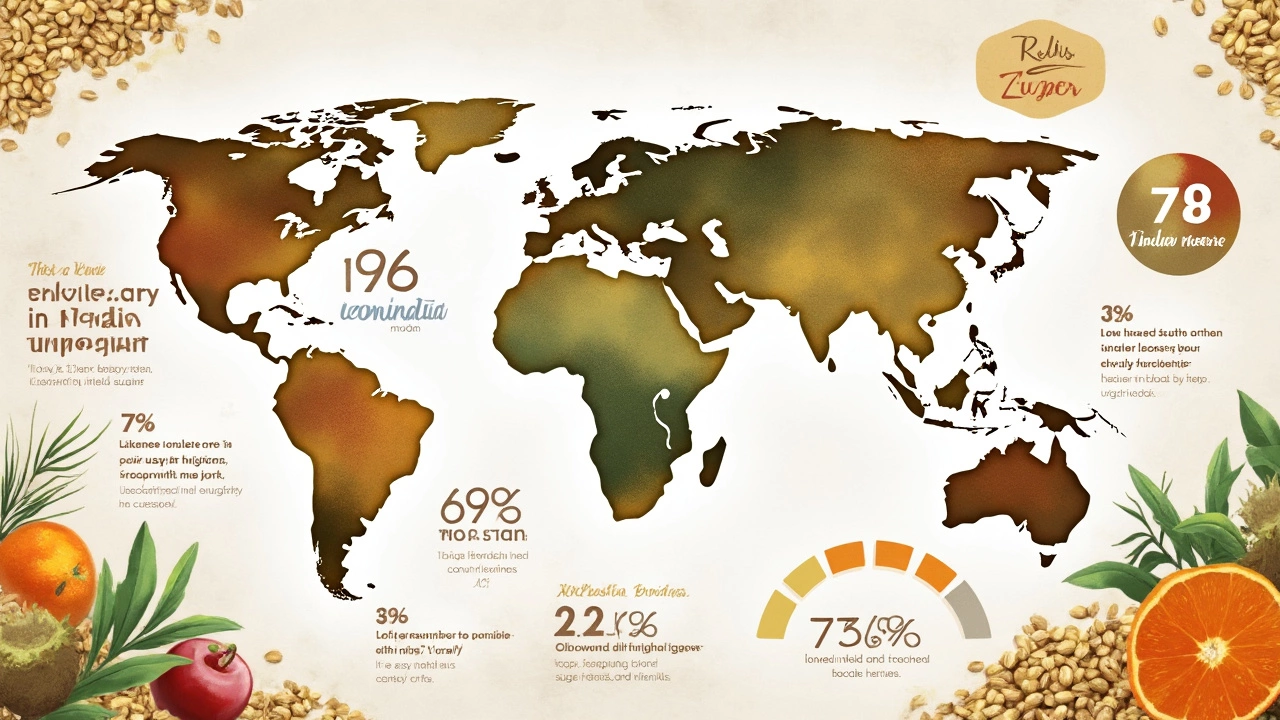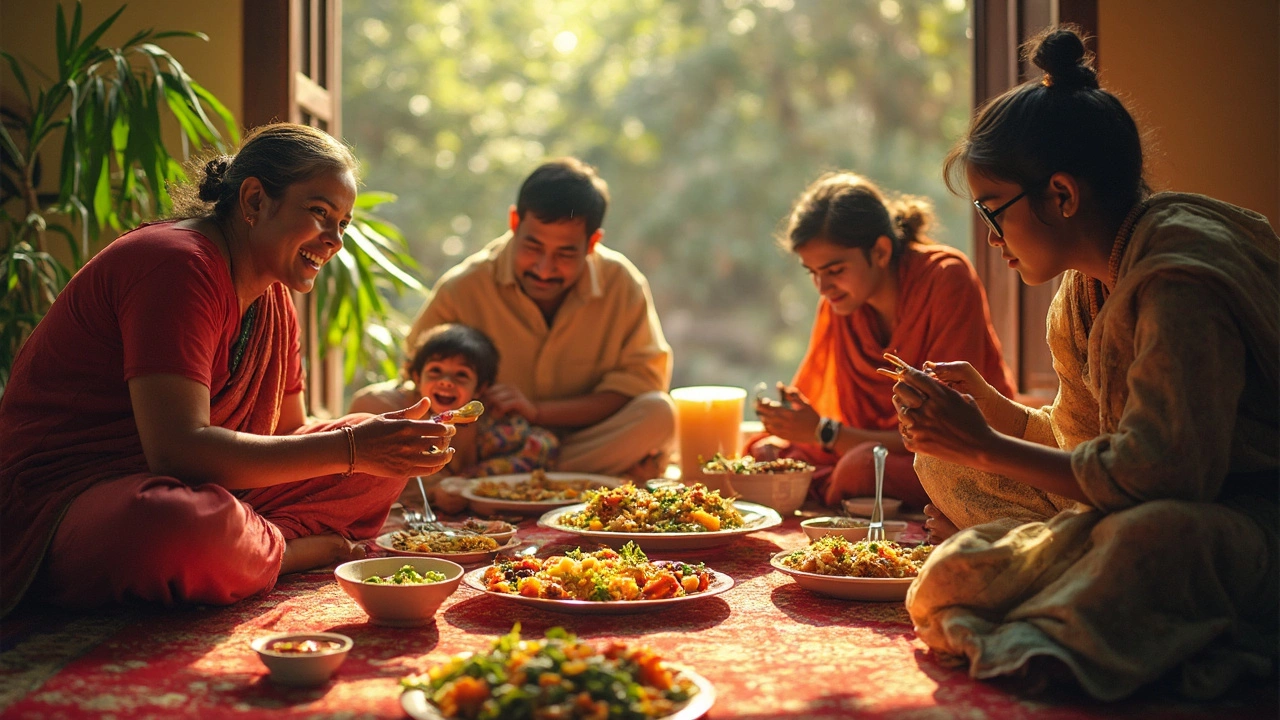You might think sugar is everywhere. After all, from fizzy drinks to breakfast cereal, a lot of what we eat seems to sneak in some form of sweetness. But not every country is hooked on sugar. In fact, some places barely touch the stuff, and there’s a lot we can learn from them.
The Country That Eats the Least Sugar
If we follow global food consumption statistics, one country often comes up as eating the least sugar: Eritrea. Tucked away in the Horn of Africa, Eritrea stands out. On average, people here consume less than 3 kilograms of sugar per person per year. Compare this to the United States, where per capita intake often hovers above 60 kg—that’s honestly astonishing.
Why is Eritrea’s sugar consumption so low? Several reasons stand out. For starters, sugar simply isn’t as easily available or affordable. The infrastructure for mass importing processed snacks doesn’t match wealthier countries. But it goes beyond just economics. Traditional Eritrean cooking leans on grains, lentils, and vegetables—flatbreads like injera are staples, and sugary desserts don’t really play a big role on the dinner table. Tea and coffee, often flavored with spices, are sipped without heaps of sugar. Even homemade treats are generally less sweet.
| Country | Average Annual Sugar Consumption (kg per person) |
|---|---|
| Eritrea | 2.9 |
| Chad | 3.4 |
| Niger | 3.8 |
| Somalia | 4.1 |
| United States | 66.7 |
| New Zealand | 57.0 |
| Germany | 35.6 |
| Brazil | 46.8 |
If you walk through an Eritrean market, you’ll see more bags of lentils and less candy. Street food is more savory than sweet. And this isn’t just a fluke of culture or income, either. Even as nearby Ethiopia grows its sweet tooth with increasing urbanization, Eritrea’s habits hardly budge. This is a huge difference from countries like the US or New Zealand, where sugar isn’t just a treat—it’s in everything from ketchup to pasta sauce.
It’s not only Eritrea though. Countries across central Africa, such as Chad and Niger, also report very low sugar consumption. While these countries have their own rich food cultures, the themes are similar: more fiber-rich grains and legumes, very little processed food, and a lot less added sugar.
Why Do Some Countries Eat So Little Sugar?
So what's really at play here? It's easy to boil it down to poverty, but that's too simple. Sure, lower incomes and less access to imported foods matter, but habits are stubborn, and traditions shape what lands on the plate just as much as money does.
Cultural foodways are strong in low-sugar countries. Fresh ingredients dominate meals. Many African cuisines, for example, use starchy bases like millet, teff, or sorghum, and protein-rich sides made with beans, chicken, or fish. Sweet desserts, if they exist, are reserved for holidays. Fruit is the go-to snack. Sugar-sweetened beverages are rare, and sodas or packaged fruit drinks are considered a luxury, not a daily fix.
This pattern isn’t just an African story. Take Japan, too: while not as extreme as Eritrea, Japan’s sugar intake is far below Western countries. Traditional Japanese desserts (wagashi) are lightly sweetened and portion-controlled. Staple foods like rice, fish, and vegetables make up the bulk of meals. Sweet drinks never caught on in the same way as in the West—green tea or water are the norm.
Meanwhile, in places like Bhutan and Laos, simple food customs keep sugar use very low. Meals focus on hearty grains, vegetables, or brothy stews, and added sugar is just not part of daily cooking. Even in the Middle East, where sweets are part of celebrations, typical home-cooked meals aren’t loaded with sugar.
It’s also about policy. Some countries heavily tax soda and imported snacks, making sugary stuff expensive. Others subsidize the production of basic grains instead. There are even cultural taboos against too much sugar in some communities, especially for young children.

How Sugar Sneaks into Diets Around the World
When you compare food labels in, say, Germany versus Ethiopia, the sugar difference leaps out. A flavored yogurt in Germany can have more sugar than an entire Eritrean breakfast spread. In the US and New Zealand, sugar gets sprinkled, poured, or hidden into just about everything—whether it’s in bread, soups, salad dressing, or “healthy” granola bars. The most sneaky source? Drinks. Soda, energy drinks, and even fruit juices spike up daily sugar intake in a hurry.
Where did this shift come from? Industrial food processing made sugar super cheap. Post-World War II, the global spread of American-style processed foods carried sugar into places it had never really been. Advertising did the rest. Suddenly, breakfast cereals, sodas, and snacks offered the promise of energy, fun, and modernity. For countries with less exposure to these global trends, tradition wins out. There’s less pressure to sweeten food to make it palatable to mass markets.
People who move from low-sugar countries to high-sugar ones often notice a difference almost right away. Even things labeled “plain” or “unsweetened” tend to taste sugary to them. In one study, Nigerian immigrants in the UK reported being shocked by the sweetness of store-bought bread and yogurt. After just a few months in a new environment, though, their own taste buds began to adjust—showing just how powerful diet and habit can be.
The Health Impact of Low vs. High Sugar Intake
So does less sugar mean healthier people? Quite often, yes. Populations with the lowest sugar consumption have some of the world’s lowest rates of diabetes, obesity, and tooth decay. Eritrea, Chad, and Niger have far fewer cases of type 2 diabetes than countries known for their love of sweets. While a low sugar intake isn’t the only reason for these numbers—genetics, physical activity, and other factors matter, too—it’s definitely connected.
There’s also a strong link between sugar and dental health. In countries like Eritrea, fewer cavities are the norm, especially among children. Meanwhile, dentists in sugar-loving countries see way more tooth decay and gum disease. It’s not just about teeth, though. The World Health Organization has linked excessive sugar to everything from heart disease to fatty liver to cancer risk. Cutting sugar, studies say, is probably the easiest way to improve public health without even trying all that hard elsewhere.
But here’s a twist: low-sugar-diet countries sometimes miss out on fortified foods, so they need to be aware of getting enough vitamins elsewhere. When foods aren’t industrially processed, that can be a plus (less sugar, fewer additives), but it means you have to be a bit more careful to get all the nutrients you need. For countries making the switch from traditional to modern diets, the trick is to hold onto the good habits—lots of veggies, lots of cooking at home—while keeping the sugar explosion in check.

What Can We Learn—and How Can You Eat Less Sugar?
You might not be able to move to Eritrea tomorrow, but you can definitely steal a few of their tricks. Here’s how:
- Stick to foods in their natural state—vegetables, fruits, grains, and beans
- Save sweet treats for parties, not weekdays
- Swap out sugary drinks for water, sparkling water, or herbal tea
- Cook more at home: you’re in control of the sugar
- Check labels—sugar’s hiding under dozens of names (glucose, fructose, syrup, maltose, etc.)
- Pick breads, cereals, and yogurts with less than 5 grams of sugar per serving
- Train your taste buds to need less sugar—start by cutting back just a little each week
- Try traditional recipes from low-sugar countries—they’re filling and flavorful without loads of sugar
A lot of people worry that cutting back on sugar means life gets dull, but that’s not true. Spices, fresh herbs, and citrus can bring more excitement to your meals than sugar ever did. Eritrean food, for example, is often seasoned with berbere (a chili spice blend) and gets pungency from fermented breads. In Japan, miso, ginger, and wasabi add punch. Once you break the sugar habit, you start noticing just how sweet everything else really is.
Want a pro tip? If you’re baking, you can often halve the sugar in recipes without losing flavor. Or swap out half the sugar for mashed bananas, dates, or applesauce. A recent study from New Zealand’s University of Otago found people who made a habit of this didn’t crave sugar as much over time. Your taste buds are more adaptable than you think!
If you’re shopping, go with fresh over processed. The further away you get from a food’s natural form, the more likely it is to have sugar tacked on. Even “healthy” protein bars and snacks can pack as much sugar as a candy bar. So step one: build your meals around whole foods. Step two: use sweets as a treat, not a dietary staple.
It’s not about being perfect, but about being aware. The world’s lowest sugar-consuming countries have shown us it’s possible to thrive—and truly enjoy food—without buckets of the sweet stuff. If Eritrea can do it, why not give it a shot?
